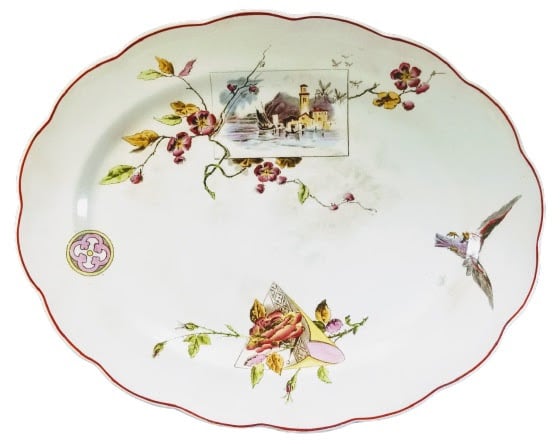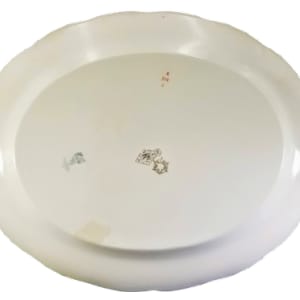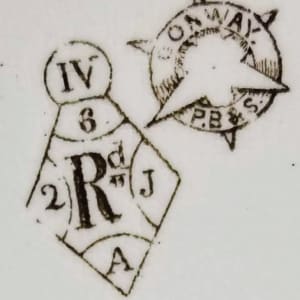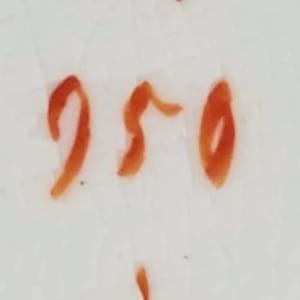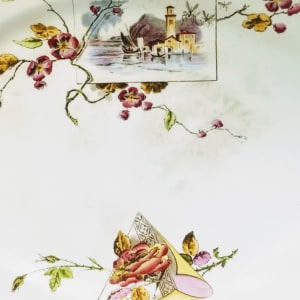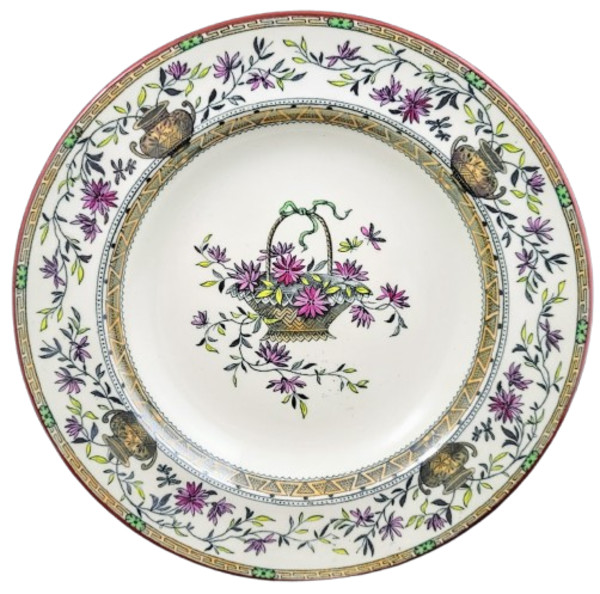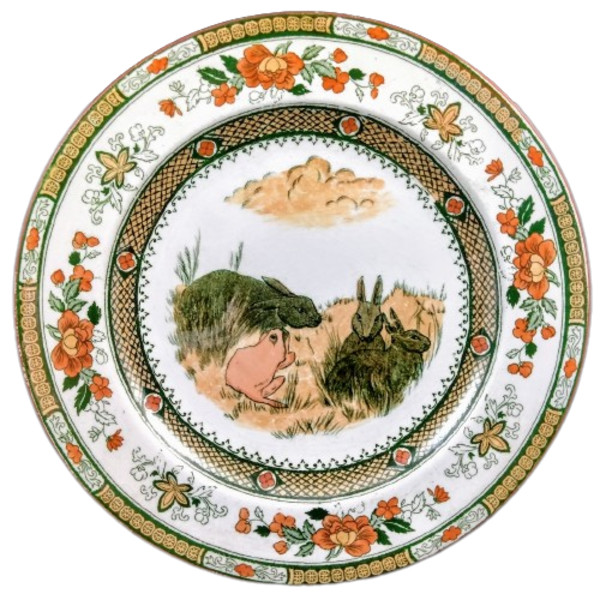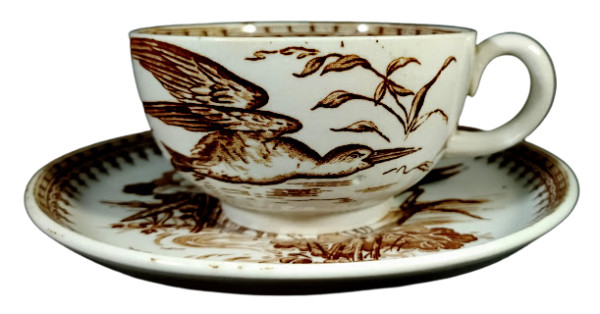- Powell, Bishop & Stonier
- Conway, Rd. 6 December 1880
- Earthenware
- 16 x 13 in (40.64 x 33.02 cm)
-
Not For Sale
Platter, 16x13 inches. Black transfer with polychrome clobbering. The registry diamond gives a date of 6 December 1880 when Powell, Bishop & Stonier registered a printed design. This pattern has four elements. At the top a rectangular cartouche with a lake scene complete with sailboat is seen in the first image. A building with a tall tower sits on the very edge of the lake. A swarm of mosquitoes approaches from the top right. A blossoming branch extends over one edge of the cartouche. At the bottom a thorny stem with a blooming rose and buds pierces a curled square piece of paper decorated with a diagonal band filled with stylized flowers. On the left is a geometric Japanese mon and on the right is a bird in flight. In the additional image of the chamber pot the same lake scene is pictures, but the opposite side of the pot features four birds sitting on a branch with one below, looking up.
Livesley Powell & Co. was formed in 1845 by William Livesley, Edwin Powell, and Frederick Bishop. The Livesley family were potters in Hanley; Edwin Powell was a potter who had been apprenticed at Dimmocks of Hanley; and Frederick Bishop was a lawyer providing financial support to the venture. In 1866 William Livesley retired and the partnership became known as Powell and Bishop. In 1878 Powell and Bishop were joined by John Stonier who was a china and glass merchant in Liverpool, employing around 400 people. One of his company's specialties was fitting out liners of the day, such as Brunel's Great Britain and the ill-fated Titanic.
In 1880, Powell, Bishop and Stonier registered a new trademark to accompany their ivory or cream colored earthenware. This shows a seated Chinese man under a sunshade or umbrella containing the words ORIENTAL IVORY - their name for the earthenware body. This oriental ivory body and their green bodied porcelain were ideal vehicles for Japanese-inspired designs which were popular in the Victorian period. These often featured asymmetrical floral and bird designs.
In 1891 Duncan Watson Bishop and John Stonier created a new company trade mark BISTO, using the first letters of their surnames. This name was incorporated into the backstamp of the period - the Wand of Caduceus. In 1906 they were using an advertising slogan in the trade press 'The sun never sets on Bisto wares.' In the 1920s a new range of designs using bright and lustrous colors was produced, known as 'Aztec Ware.' Children's nursery ware was also produced featuring nursery rhymes and stories. Other wares of the 20th century period included bathroom sets, vases, and sardine dishes. In 1933, the company was taken over by George Jones & Sons. They continued to use the wand mark and also the mark of a bishop until 1939.
- Subject Matter: Aesthetic (Cartouche)
- Collections: Aesthetic Transferware, Powell, Bishop & Stonier
